A green hairstreak butterfly at BBOWT's Dancersend nature reserve near Aylesbury. Picture: Mick Jones
Our top 10 wildlife sightings for May
A blizzard of butterflies
Green hairstreak, holly blue and grizzled skipper are among the blizzard of butterflies to look out for over the coming weeks.
After those species that overwinter as adults emerge from hibernation in March and April – such as bright yellow brimstones and colourful peacock – May is the first month of the year to see the first of the new generation of many butterflies.

Holly Blue ©Amy Lewis
Pale holly blues can be seen flitting around gardens, hedgerows and in open woodlands, and the brown-and-white grizzled skipper frequents flowery places. The green hairstreak only appears green when its wings are closed because it is the undersides that are so strikingly-coloured – helping it blend into foliage. The tops of its wings are a dull brown colour, meaning it can almost disappear when it lands among green leaves.
Look out as well for the first generation of red admiral, brown argus and large white.
Our Yoesden reserve near High Wycombe is a great place to see butterflies that love open, chalk grassland, and our Dancersend reserve near Aylesbury has a host of woodland species.
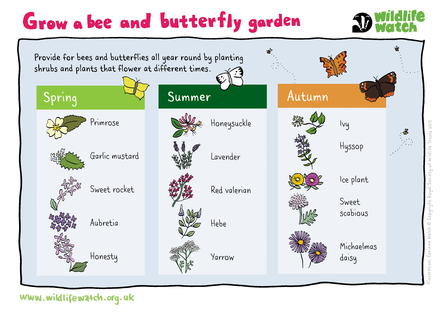
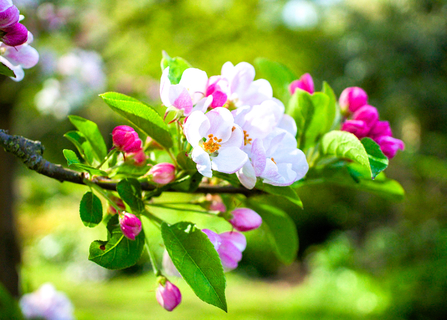
Crab apple blossom. Picture: Ian Kirk/ Wikimedia Commons
Crab apple blossom
The wild crab apple, Malus sylvestris, is one of the ancestors of the cultivated apple that we know and love. This small tree is found on woodland edges and hedgerows and its pinky-white flowers appear in May.
Like many of our trees, the crab apple is important for wildlife including many insects that rely on the nectar and pollen, blackbirds, thrushes, mice and voles which all eat the fruit. Crab apple trees can be distinguished from cultivated relatives by their small, finely-toothed oval leaves and small, yellow-green fruits.
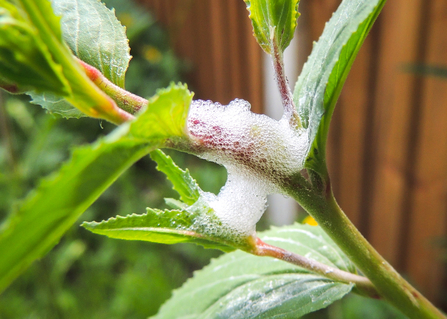
'Cuckoo spit': froghopper nest foam on a plant in Bedfordshire. Picture: Organgeaurochs/ Wikimedia Commons
Cuckoo spit
One of the most distinctive wildlife sights to spot in May is cuckoo spit - and it has nothing to do with cuckoos or spit!
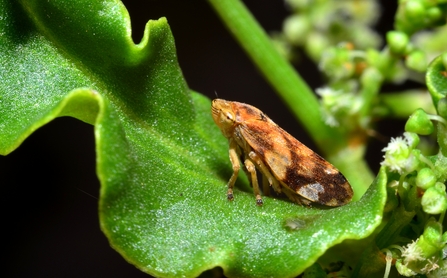
A common froghopper (Philaenus spumarius). Picture: 1bumer/ Wikimedia Commons
This sticky foam is actually made by tiny insects called froghoppers as a nest: eggs are laid inside where they develop in safety, and nymphs emerge later.
The adult froghopper is a champion jumper and is able to leap 70cm into the air - a greater feat than the flea and similar to a human jumping over a tower block!
You can find cuckoo spit and froghoppers in gardens, meadows and fields.
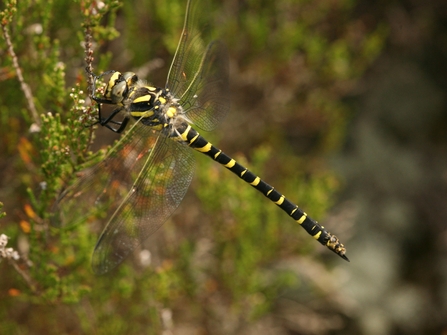
Darting dragonflies
A voracious predator that will even eat other dragonflies, the golden-ringed dragonfly is the UK's longest species, growing up to 8.4cm. It can be found around acidic streams in woodland and heathland habitats from May to September.
Both sexes of the golden-ringed dragonfly are black, with yellow bands along the body and bright-green eyes. Females are longer and broader than the males, who have a 'waisted' appearance.
Our Wildmoor Heath reserve in Berkshire is a great place to see golden-ringed and other dragonfly species.

Common pipistrelle by Tom Marshall
Bats on the wing
The UK is home to no fewer than 18 species of bat, and by the middle of May all species will once again be on the wing after winter hibernation.
Our commonest species is the tiny common pipistrelle, which weighs as little as five grams, but can still eat up to 3,000 insects in a single night. Our biggest species is the noctule, but this is still small enough to fit in the palm of a hand - unless its wings are open, in which case it can have a 40cm wingspan!
The best time to look for bats is on a warm evening just as the sun is going down.
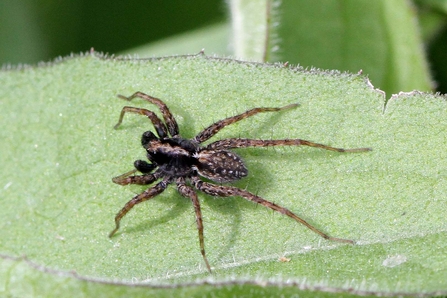
Wolf spider. Picture: Margaret Holland
Dancing wolf spiders
The wolf spider is a medium-sized spider that hunts on the ground during the day: it chases down its prey and leaps on it like a wolf. It frequents gardens and grasslands, as well as a variety of other habitats, and can often be seen sunbathing or running across the ground.
At this time of year, male wolf spiders start performing an intricate courtship dance to attract their mate, waving and vibrating their front legs. Look out for the males hunting for females on piles of rocks and logs.
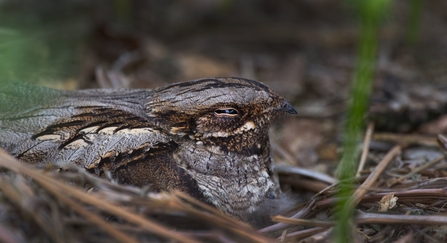
Nightjar adult brooding chicks by David Tipling/2020VISION
Nesting nightjars
Nightjars are migrants to the UK, spending their winters in Africa. At this time of year they start to return to the British Isles to mate and nest. Like many other birds, they make their nests on the ground, making them more vulnerable to predators, which is why we run awareness campaigns each spring and summer asking dog walkers to take extra care around known nesting areas such as our Greenham Common and Snelsmore Common reserves.
These wonderful birds are famous for their distinctive 'churring' call which they make at dusk and we are lucky enough to have them nest at some of our reserves, including Greenham Common near Newbury. Look out for this year's walks coming soon on our events page.
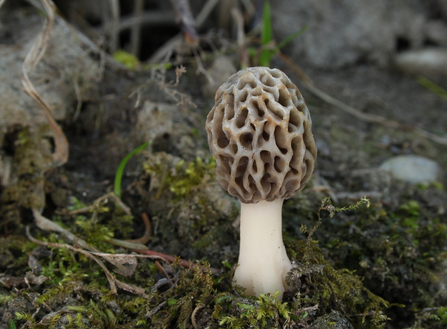
A morel mushroom growing in a woodland. Picture: Holger Krisp
Morel mushrooms
Morel mushrooms are instantly recognisable by their honeycomb caps in shades of brown and grey. Although a native species, they are uncommon, but May is a great time to look for them in woodland and hedgerows.
Poisonous when raw, this species - like many fungi - is the subject of much folklore, and was once said to be the work of the devil. In Chinese medicine it is used to treat indigestion and shortness of breath.
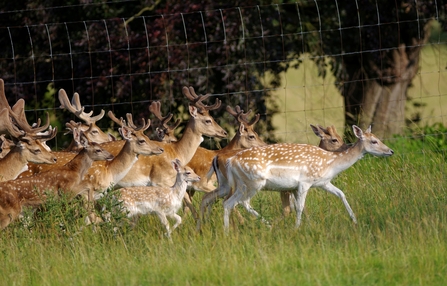
A group of male and female fallow deer. Picture: Gillian Day
Fallow deer
The fallow deer is an elegant, medium-sized deer, with a typically spotted coat. Although brought here by the Normans, it is now considered a naturalised species and is the most common deer in England.
Males can be identified by their broad, flattened antlers, with which they do battle during the breeding season in autumn. May is the time of year when males usually cast off their old antlers and start to grow new ones.
Look out for these large animals in and near woodlands.

Common lizard by Andy Fairbairn
Lizards in love
Living up to its name, the common lizard is the UK's most common and widespread reptile. It is found across many habitats, including heathland, moorland, woodland and grassland, where it can be seen basking in sunny spots.
After emerging from hibernation, lizards usually mate in April and May. Also known as the 'viviparous lizard', the common lizard is unusual among reptiles as it incubates its eggs inside its body and 'gives birth' to live young rather than laying eggs.
Look out for this species scurrying around the heather at Snelsmore Common near Newbury.
Common lizard (https://vimeo.com/646954834)
Common lizard. Video by Tom Hibbert
Things to do in May
Stay up-to-date with our work
Sign up below to receive the latest news from BBOWT, tips about how you can help wildlife, plus information on how you can get involved.




